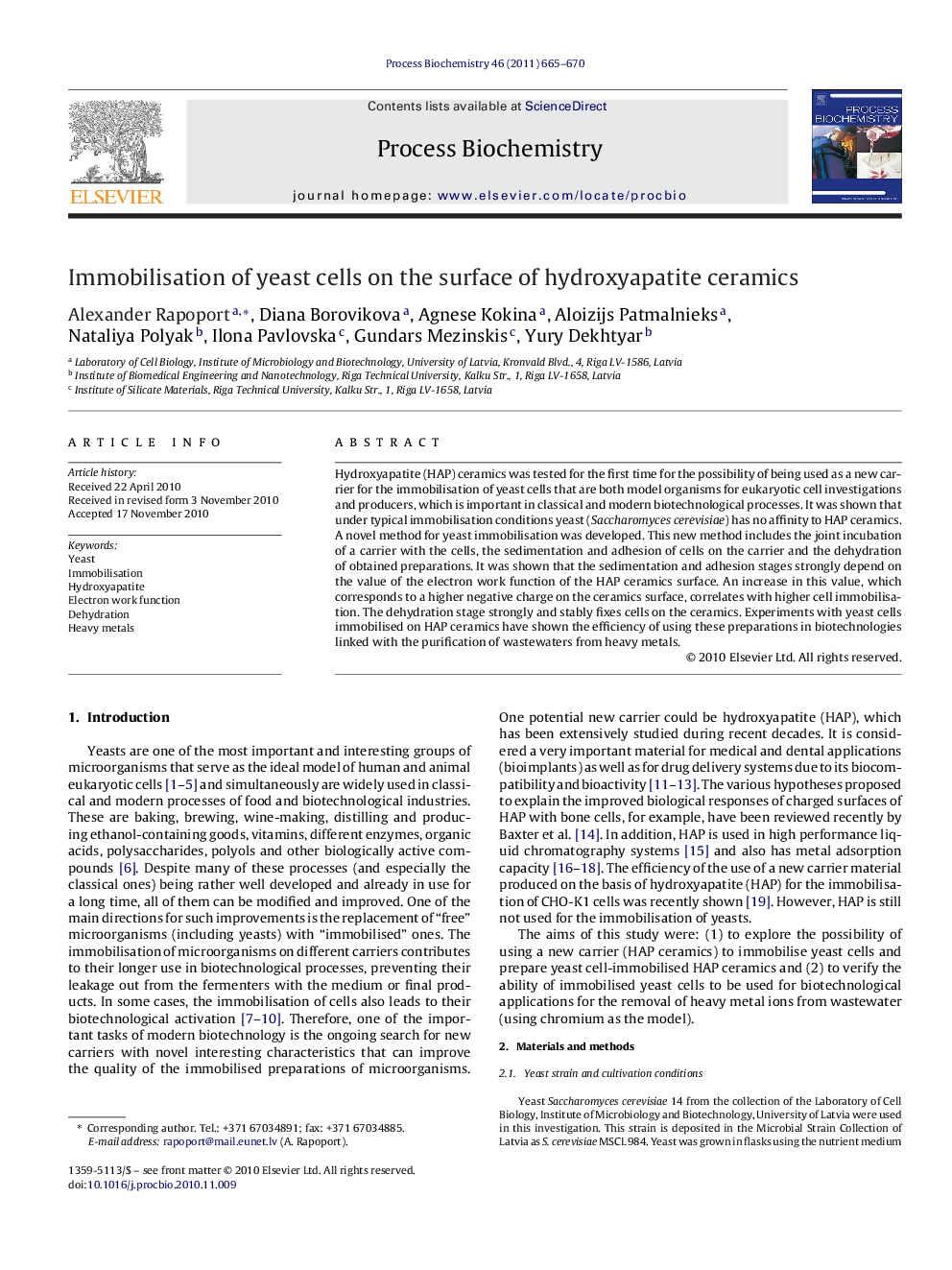| Article ID | Journal | Published Year | Pages | File Type |
|---|---|---|---|---|
| 10235987 | Process Biochemistry | 2011 | 6 Pages |
Abstract
Hydroxyapatite (HAP) ceramics was tested for the first time for the possibility of being used as a new carrier for the immobilisation of yeast cells that are both model organisms for eukaryotic cell investigations and producers, which is important in classical and modern biotechnological processes. It was shown that under typical immobilisation conditions yeast (Saccharomyces cerevisiae) has no affinity to HAP ceramics. A novel method for yeast immobilisation was developed. This new method includes the joint incubation of a carrier with the cells, the sedimentation and adhesion of cells on the carrier and the dehydration of obtained preparations. It was shown that the sedimentation and adhesion stages strongly depend on the value of the electron work function of the HAP ceramics surface. An increase in this value, which corresponds to a higher negative charge on the ceramics surface, correlates with higher cell immobilisation. The dehydration stage strongly and stably fixes cells on the ceramics. Experiments with yeast cells immobilised on HAP ceramics have shown the efficiency of using these preparations in biotechnologies linked with the purification of wastewaters from heavy metals.
Related Topics
Physical Sciences and Engineering
Chemical Engineering
Bioengineering
Authors
Alexander Rapoport, Diana Borovikova, Agnese Kokina, Aloizijs Patmalnieks, Nataliya Polyak, Ilona Pavlovska, Gundars Mezinskis, Yury Dekhtyar,
